
|
JAPANESE PRINTS A MILLION QUESTIONS TWO MILLION MYSTERIES |
Ukiyo-e Prints浮世絵版画 |
|
Kansas City, Missouri |
|
INDEX/GLOSSARY
Aoi THRU Awabi |
|
|
The molecular model on Lonsdaleite is being used as a marker for new additions from January 1 to May 31, 2021. |
|
|
|
TERMS FOUND ON THIS PAGE:
Aoi, Aoji, Aragoto, Arashi Kitsusaburō II, Arashi Rikan I, Aratame, Araumi, Ariake andon,
Ariwara no Narihira,
Asagao, Asanoha, Asanohamon, Ashigaru, Ashikaga Yorikane, Ashinaga-Tenaga, Ategami, Atenashi bokashi, Atozuriand, Atsuita, Atsuwata, Augustus the Strong, Awabi
葵, 青磁, 荒事, 嵐橘三郎, 改, 荒海, 有明行灯,
在原業平,
足利頼錦, 足長手長, 当て紙, 当て無し暈し, 後摺, 厚綿, 鮑 |
|
|
|
One more note about this page and all of the others on this site: If two or more sources are cited they may be completely contradictory. I have made no attempt to referee these differences, but have simply repeated them for your edification or use. Quote anything you find here at your own risk and with a whole lot of salt. |
|
|
TERM/NAME |
KANJI/KANA |
DESCRIPTION/ DEFINITION/ CATEGORY Click on the yellow numbers to go to linked pages. |
|
Aoi |
葵
あおい
|
Hollyhock - often used as a decorative motif or as a family crest or mon. The hollyhock is a native Japanese plant which came to be associated with the Kamo Shrine in Kyōto and through that connection it acquired a sacred significance. Because of that quite a few families devoted to that shrine adapted the motif as their own personal crests.
Source: The Elements of Japanese Design by John Dower (pp. 58-59)
Taxonomy, morphology and semiotics are all concepts I have trouble grasping - among a whole host of others. That is why I struggle over almost each and every entry I have made on these pages. For what seems like ages I have accepted that aoi (葵) is as Dower states the simple hollyhock. In this case the Alcea rosea. However, as I started to dig deeper I found that the hollyhock is often referred more specifically to as the tachiaoi (立葵) and no matter how much I looked I couldn't find leaves which looked enough like the ones in the crests to the left. That is until I ran across another aoi, the futaba aoi (双葉葵) which is the Asarum caulescens. We know it as wild ginger.
The image of the plant is from the web site operated by Shu Suehiro at: http://www.botanic.jp/index.htm
The Matsudaira (松平), a "Patronymic name of a certain number of families, related to the Tokugawa...[徳川]" used several variations of this crest as their own.
Quote from: Historical and Geographical Dictionary of Japan, by E. Papinot, published by Tuttle, 1992, p. 355.
In Bamboo in Japan the authors note that the heavily flower laden umbrellas often shown in pictures of the Aoi Matsuri actually play a minor role in this procession. But, damn, they are photogenic.
One source says the Hollyhock Festival is the world's oldest.
|
|
One of the major Shinto festivals in Japan is the Aoi Matsuri held in Kyoto every May 15th. It dates back to the at least as early as the sixth century and has particular significance to the Imperial Court. The procession would first travel from the Imperial Palace (京都御所) to the Shimogamo (下鴨)and then later to the Kamigamo (上賀茂) shrines. "During the Heian period, hollyhocks were thought to ward off thunderstorms and earthquakes; thus, the leaves are worn on headgear, are on the carts, and are offered to the gods as well." Quoted from: Kyoto: A Cultural Guide by John and Phyllis Martin, p. 333. Originally the festival was held "...in the fourth month on the second day of the cock." The second day of the cock is called tori no hi and the ceremony was originally referred to as the Kamo-sai. "To do justice to the Kamo-sai and what it has meant for the city of Kyoto, the court, and the Japanese culture in general, one would need an entire book and several years of meticulous historical research." (Source: Enduring Identities: The Guise of Shinto in Contemporary Japan by John K. Nelson.
If you are wondering why the leaves shown above don't jive with your understanding of what most hollyhocks look like the answer may lie here: "Aoi is often mistranslated as 'hollyhock,' but is actually a small plant that grows in shaded woodlands, known as Asarum or wild ginger." Quoted from: Handmade Culture: Raku Potters, Patrons, and Tea Practitioners in Japan by Morgan Pitelka, footnote 79, 184.
Originally the festival was quite different: "...riders donned masks of wild boar (most likely the outer hide itself), decorated their horses with suzu bells, then raced them (often shooting arrows along the way) in honor of the kami. Also, elaborate food offerings were served to the deities, and aoi flowers festooned offerings, riders, horses, and temporary buildings." In time the festival began to attract attention from the surrounding areas and the court began to think of it as a threat. At one point it was even cancelled. Later it was made a "court-sponsored festival" and it became more sedate. These continued until 1502. The Tokugawa revived it in 1694 on a reduced scale. The festival was again endangered by the move of the capital to Tokyo in 1869. Other restrictions against the old order also made its existence more tenuous. In 1885 the festival again received state sponsorship and with the adoption of the Gregorian calendar the whole event was moved from April to mid-May. The events of World War II caused a cessation in this spectacle, but it was restarted in 1953. (Enduring Identities) Until the time of the Meiji Restoration the Aoi Matsuri was made up of four different rituals.
There is an unattributed, typed manuscript posted on the Internet from the University of Delaware that has the most comprehensive information about the Asarum caulescens which we have yet to find. We wish we knew who wrote it so we could credit them appropriately. Below a few of the more salient points.
There is an early Korean shamanistic song quoted from a newspaper article from 1981 which mentions the power of the Asarum among other plants.
Clad in creepers with a belt of mistletoe, Driving red leopards, followed by striped civets, Chariots of magnolia, banners of cassia wood, Clad in stone orchid, with a belt of Asarum...
"During the Heian period the leaves of the Asarum were thought to deter thunder and earthquakes, and the plants were hung under the eaves of building for protection. Carved Asarum designs were eventually substituted for the actual plants, and these designs can still be seen in Kyoto on the beams of old buildings." (Our source is referencing Japanese Festivals by Haga and Warner, pp. 41-3)
"The Matsuo Shrine still offers charms bearing the early Asarum designs for a wide range of disorders, including those caused by excessive drinking."
Above is a photo of the Tokugawa crest at Nikko taken by Fg2 and posted at commons.wikimedia.org.
Our unnamed source quotes an interview they had with a restaurant owner in Japan: "In Japan cucumbers are not sliced transversely as we normally slice them, but only in longitudinal strips. The transverse slice of a cucumber bears a pattern which resembles a design of the Tokugawa Asarum kamon, and for three centuries of Japanese history it would have been a foolhardy act to be seen munching that symbol of supreme power."
Several daimyō families other than the Matsudaira used the Asarum as a crest: the Honda, Ii, Ina and Shimada. "In their drive for power the Tokugawa family, a provincial family of no particular standing, defeated the Matsudaira and assumed the use of the Asarum crest as one of the spoils of battle."
"The Asarum crest underwent countless changes and elaborations during the course of Tokugawa rule as the family prospered and spread."
"Next morning we crossed over the mountain. Words cannot express my fear in the midst of it. Clouds rolled beneath our feet. Halfway over there was an open space with a few trees. Here we saw a few leaves of aoi (Asarum caulescens). People praised it and thought strange that in this mountain, so far from the human world, was growing such a sacred plant." (Quoted from: Diaries of Court Ladies of Old Japan, published by Houghton Miflin, 1920, pp. 12-13)
On 4/26/10 a Matsudaira descendant sent us this information from The Maker of Modern Japan: The Life of Shogun Tokugawa by A. L. Sadler. Because it was sent in an e-mail we have edited it somewhat and have corrected any typos we think we might have found. Other than that we really want to thank our correspondent for bringing our attention to this passage so we can share it with all of you. "The Tokugawa crest of three hollyhock leaves (Aoi-no-Go-mon), only used by the Shogun and the descendants of the sons of Ieyasu (Go-Kamon) and in a modified form by the various Matsudaira families, is said to have been adopted by Hirotada, the father of Ieyasu, because cakes were served him on three of these leaves by one of the Honda houses when he returned after a victory. The Hondas have for the cognizance [?] the same group of three hollyhock leaves, but elevated on the stalk. Hence perhaps the punning story that Ieyasu admired the Honda crest, and when that warrior asked him to take it as his own crest he replied, "O ha-bakari" ("The leaves only"), an expresion which divided differently "o habakrai," means "by your leave." And the hollyhock which bows it head to the sun is regarded as a symbol of the loyal retainer who dutifully obeys his Lord." |
||
|
|
||
|
Aoji |
青磁
あおじ |
Celadon: more often called seiji (せいじ).
The image to the left is said to be a 17th century Imari dish in the collection of the Tokyo National Museum. We found it at Wikimedia.commons. The image shown above is from the same site, posted there by Reiji Yamashima. It represents a Chinese celadon vase from the 13th-14th century, Yüan dynasty. It can be found in the Museum of Oriental Ceramic in Osaka. |
|
Aragoto |
荒事
あらごと |
Rough style: "The
expression aragoto is an abbreviation of aramushagoto, which means
litterally "the reckless warrior matter". This is in fact a Kabuki bombastic
style exagerrating all the aspects of the role (acting, wig, make-up (kumadori),
costumes, dialogues, oversized swords) to portray valiant warriors, fierce
gods or demons. This style was created in Edo by Ichikawa Danjûrō I and is
considered a "familly art" for this line of actors. It is the opposite style
of the soft wagoto created by Sakata Tōjûrō I in Kamigata." This quote is taken directly from the Kabuki 21 web site. (Click on the yellow highlighted link to be taken to their home page. The quote is from their Kabuki Glossary: A thru C page.) Personally I consider this the best site in English to be found on the Internet. Maybe the best in any language. This is a resource which should be used by anyone and everyone interested in kabuki/theatrical prints/Japanese culture in general. Thanks Kabuki 21!
The image to the left is an actor in the role of the priest Narukami by Toyokuni III. |
|
Arashi Kitsusaburō II |
嵐橘三郎
あらし.きつさぶろう |
Kabuki actor (1788-1837). Aka as Arashi Tokusaburō and Arashi Rikan II. 1
According to Dramatic Impressions: Japanese Theatre Prints from the Gilbert Luber Collection (p. 23) there was a major rivalry between Nakamura Utaemon III (1778-1838) and Arashi Kichisaburō II (二代目嵐吉三郎: 1769-1821) who was better known as Rikan I. Each actor led their own troupes. "In 1822 Arashi Tokusaburō, a student of Rikan I's brother Isaburō, assumed the name Arashi Kitsusaburō II... Kitsusaburō II... became the new leader of Rikan I's troupe and, in 1828, assumed the name of Rikan II. Utaemon III supported the young Rikan Il/Kitsusaburō II..... they frequently played opposite one another on stage."
In an essay by Charles J. Dunn in A Kabuki Reader: History and Performance (pp. 83-84) the author discusses the fact that the supporters of Utaemon III and Rikan I tried to bring about a reconciliation between the two before Rikan died. The two were brought together in 1821 on a boat where Arashi Kitsusaburō II played opposite Utaemon. "This new man had been born in Osaka in 1788 and had spent most of his early career there as a child actor and with the Takeda no Shibai .His teacher was Arashi Isaburō, and he was in Edo acting under the name of Arashi Tokusaburō when he was brought to Osaka by Utaemon and given his new name in the memorial performance. There are hints that Tokusaburō had inclined to be on Utaemon's side in the now past rivalry, and he had been playing at the Nakamura-za in Edo, so that any other candidates for what was now clearly the top position in the Osaka Arashi school would have failed for lack of Utaemon's support. In any case, the new Kitsusaburō II was recognized as a good actor, especially in realistic roles. His dancing was not highly regarded. His looks, however, were characterized by his large eyes, and he acquired the nickname of Metoku Rikan ("Rikan with the good eyes," a pun on his earlier name). He was later (1828) to change his acting name officially to Rikan; he died in 1837." |
|
Arashi Rikan I |
嵐璃寛 あらしりかん |
Kabuki actor (aka Kichisaburō II 吉三郎, Kitsusaburō I 橘三郎, 1769-1821): Rikan was so highly regarded that the artist Ashiyuki portrayed him in a book illustration as "Our Beloved Emperor" in 1815. In 1817, in a surimono, Rikan was elegantly portrayed as a powerful aristocrat by Kunihiro. (See Andrew Gerstle's Creating Celebrity: Poetry in Osaka Actor Surimono and Prints, pp. 138-140.)
Rikan was an accomplished poet. He published his first kyōka in 1783 at the age of 15. "...thereafter, his verses were regularly included in book publications from the Maruha 丸派 group, which flourished in the 1780s to 1810s." (Ibid., p. 144)
Gerstle noted on page 157: "For Rikan, I believe that we can argue that haikai and kyōka were crucial mediums for both his professional and personal life. In comparison with his rival Shikan, a tactician and master of creating celebrity, however, Rikan was relatively stiff and unwilling to pander to popular currents. Poetry for him, it seems, was within the private world of the heart."
The image to the left is a detail from a print in the Lyon Collection. To see the whole image click on it. |
|
Rikan wrote at the time of his retirement: "In all humility: Thanks to the patronage of my fans, I have been able to perform until after the age of fifty. My debt is deeper than the sea and higher than any mountain. However, over the last year or so I have not been well, and have not been able to perform to my satisfaction. I took time off to try to recuperate and when the illness seemed better, I would again take to the stage after encouragement from others. But I am afraid that my performances of late have not been pleasing to the audience, and I apologize for this. They say even the Buddha grows impatient after three affronts. If I were to continue to displease you time and again, all your warm affection would gradually dissipate and I would only soil my family's name. Therefore, borrowing the wisdom of others and taking my patrons' advice, I have decided to withdraw from the stage and convalesce, before I defile my name, and to pass on this present name to Daisaburō 大三郎, the son of my older brother Arashi Isaburō. I now pass my name Kichisaburō to him and take the name Kitsusaburō. However, I shall not abandon my responsibilities to the troupe and become just a doddering old man who grinds miso paste at temples. Therefore, I beg your continued favor and patronage for Kitsusaburō. Although this isn't the same as feeding both the cat and the mouse, I beg the favor of all of you from the north and south, east and west; we depend on your strength to support us. ¶May our patrons prosper for thousands upon thousands of generations, and may we see a thousand autumns and safely conclude our performance."
"This actor was born in Osaka in 1769, the son of Kichisaburō I. The family's earlier surname was Takeda and it was connected with a Takeda family that had been puppet masters for Gidayū, had specialized at one time in automata [mechanized puppetry. Ed.], and in Takeda Izumo had provided the principal writer of the team which had put together Kanadehon Chūshingura and other famous pieces. Under the name of Kichimatsu, Kichisaburō II had appeared first at the Takeda Hama Shibai [Takeda Shore Theatre, later called the Takeda no Shibai: a mid-ranked theatre named for its location on the shore of the Dōtonbori canal. Ed.], but had moved then to Kyoto to study under Arashi Sangorō II. The Arashi family had been in the Kyoto/Osaka area since about 1670 when an actor, Nishizaki San'emon, acquired the nickname of Arashi from his fine performance of a passage including the word arashi (storm) and made it into his family name. The Kichisaburō line was thus a fairly recent recruit to it. Kichisaburō II was given his name in 1787 and from then on rapidly climbed to a top position in the grading of actors in Osaka. He spent his whole acting career there and in Kyoto, attracting a great deal of support from the public, especially, it is said, from his female fans, for he had inherited his father's good looks. He specialized in vigorous male roles and is reported to have had a remarkably fine voice. In 1815, when Utaemon came back to Osaka, Kichisaburō was recognized as the hanagata (top star) of the Osaka stage. His career had not been marked by any outstanding incident; it seems rather to have consisted of a rapid rise to, and maintenance of, the highest rankings." [Quoted from an essay by Charles J. Dunn in A Kabuki Reader: History and Performance, edited by Samuel Leiter, p. 82. |
||
|
|
||
|
Aratame |
改
あらため |
A seal used on prints published between 1853 and 1857. It means "examined." Sexton wrote that "...the Aratame round seal, which came into use in this form during the 11th month of 1853, when the censor seals were discontinued. [¶] It will be noticed that, from some day in the 11th month of 1853 till the end of 1857, a round Aratame seal always accompanies an oval or more rarely a heart-shaped date seal." Sexton noted that in 1858, the Horse year, only an oval date seal was to be found while in 1859, the Ram year "...and the subsequent years, Aratame is incorporated with the date in one round seal. The oval date seal.... makes its first regular appearance in the Rat year of 1852."
"When a print bears a date-seal as well as Censors' seals, we can date it with absolute accuracy." (Sexton) |
|
Araumi |
荒海
あらうみ |
A decorative pattern of roiling waves and foam. The image to left has been sent to us by an anonymous collector in Switzerland. Thanks!
Literally rough seas.
Bashō wrote a haiku rich in meaning using the word araumi. (The Japanese was provided to us by our great contributor Eikei/英渓.)
Ara-umi ya Sado ni yokotau Amanogawa
What a rough sea it is! Over the isle of Sado Lies the Milky Way
荒海や 佐渡が横たう 天の川 |
|
Bashō viewed the island from the coast. From there it seemed small and insignificant the same way man seems small and insignificant within the universe. Adding to the poignancy of the poem is the fact that Sado (佐渡島) was an island where several famous men had been exiled including the ex-Emperor Juntoku (1197-1242), Nichiren (1222-1282) and Zeami (1363-1443)
One commentator on the poem said: "The word araumi, for instance, does not mean just a sea that has become wild because of a storm; it implies a sea that has been wild for eons because of its geographic location. The nuance complements the sense of permanence evoked by images of Sado Island and the Milky Way." (Quoted from: Modern Japanese Poets and the Nature of Literature by Makoto Ueda, p. 169) |
||
|
|
||
|
Ariake andon |
有明行灯
ありあけあんどん |
A morning lantern. 'Ariake' represents the moon left in the sky at dawn. Literally a dawn lantern.
"When paper is applied to a frame enclosing an oil dish to make a light chamber (hibukuro), the result is the andon... Various types exist, most notably the squared kaku-andon..., the cylindrical maru-andon..., and the more elaborate ariake-andon... This last type essentially consists of a base and framed-paper shade, both box shaped, the base doubling as the second shade: whenever a lower level of lighting was desired, the slightly larger base, which would have full- or crescent-moon openings or both cut through one or more sides, could simply be slipped over the paper shade." Quoted from: Traditional Japanese Furniture, Kodansha, 1986, p. 106.
We found this image at Pinterest. Below is a detail from a Kuniyoshi print in the collection of the National Diet Library. It probably dates from the 1830s. It shows a variant of the ariake andon hanging from the limb of a pine tree.
|
|
Ariwara no Narihira |
在原業平
ありわらのなりひら |
Famous poet and lover (825-880): "...the master playboy Narihira, who is said to have bedded with 3733 women in his lifetime."
"Early Heian waka poet. For so famous a poet, little is known of him, and legend has eclipsed fact. His friendship with the ill-starred Prince Koretaka became a pattern of friendship, and the use of some of his poems with those by others in the Ise Monogatari set a model for dashing courtly lovers. If in one episode he uses a broken place in a wall to effect a rendezvous, so, following that example, do numerous other lovers, including Niou in the "Ukifune" part of the Genji Monogatari. The canon of poems certainly by him is small, but it includes the most famous of tanka (Kokinshū, 15:747) on the moon and spring that seem to change while he alone remains as he was in past. The fame of the poem was so great that those using it for allusion (honkadori) were expected to regard the words as sacrosanct (nushi aru kotoba) and allude to it only conceptually. Ki no Tsurayuki's half-grudging, half-admiring comment in the preface to the Kokinshū that Narihira's mind (or heart) was too great and his words too few well captures the intense intellectuality of his style. He is one of the rokkasen and sanjūrokkasen." Quoted from: The Princeton Companion to Classical Japanese Literature by Earl Miner, Hiroko Odagiri and Robert Morrell, p. 143,
The image to the left is of an Utamaro print of Ariwara no Narihira and Ono no Komachi. It comes from the Lyon Collection. |
|
|
朝茶 あさちゃ |
Morning tea: Joan Mirviss wrote: "According to Edo folk belief, imbibing a cup of tea before or with breakfast was thought to insure good luck for the rest of the day." |
|
Asagao |
朝顔 あさがお |
Morning glory.
The photograph of the white morning glories comes from a web site run by someone who calls herself Paghat the Rat Girl. It is a wonderful site and I feel a kinship with her because she marries natural beauty with literary beauty, folklore and history. This is very much what I am trying to do for Japanese prints. Click on the photo to go to her specific page on morning glories and then explore the rest of her site. It is wonderful and who doesn't love nature?
The details above and below the photograph are from a print by Kuniyoshi. Click on the number to the right to go to that page. 1
|
|
The morning glory or Ipomoea nil : Supposedly May 1, 1753 Linnaeus named this genus Ipomoea, but so far I don't know why or how he chose this name. I say supposedly because the history of plant names has more twists and turns than the vine itself. Actually it may have been 1763, but that is not the point of this entry.
Last night, January 29, 2008, I was reading Japanese Tales which was edited and translated by Royall Tyler. (Pantheon Books, 1987) He made a reference to the use of morning glory seeds as a diarrhetic. I slept on that and this morning I started thinking about that passage. During my younger days I often heard that morning glory seeds were used as a hallucinogen. The same was said to be true of the wild woodrose. Carlos Castenada in his Teachings of Don Juan: A Yaqui Way of Knowledge sang the praises of plants as a vehicle for spiritual expansion. His books were extremely popular with a large section of the college crowd. Aldous Huxley told us about The Doors of Perception. Then there was toad licking. Even the Simpsons had an episode about that. But nowhere, not here, not there, were morning glories ever referenced as a diarrhetic.
We all know the basis of folk medicine and how it frequently did the job. Today we live in a society divided into various factions some of which believe heart-and-soul in the 'natural path' while others rely completely on chemically engineered pharmaceuticals. The third way is probably more common. However, despite all of the marvels of the Internet I could find no direct references to the use of crushed morning glory seeds as a diarrhetic even though I probed to the depths and bowels of each and every search engine available to me.
The story which Royall Tyler translates so capably mentions other ingredients combined with the crushed morning glory seeds: Salted fish and wine which was made both "...cloudy and sour." Perhaps that combination was just enough to do its magic. I remain skeptical and don't plan on performing any experiments on myself or anyone else for that matter. Maybe it is just a story.
The source of Tyler's translation is from the Konjaku monogatrishū (今昔物語集) or "Tales of Times Now Past" from ca. 1100.
In the summer of 1682 Ransetsu brought a painting of a morning glory to Bashō and asked him to write a poem about it. He wrote:
morning glory:
asagao wa
朝顔は 下手の書くさへ あはれなり |
||
|
|
||
|
Asanoha |
麻の葉
あさのは |
Hemp: A common stylized motif used in family crests. "Often identified as one of the five basic crops or 'grains' of ancient China, the hemp or flax plant played both sacred and profane roles in Japan."(Quoted from: The Elements of Japanese Design by John Dower, p. 58)
Although the examples I am able to show here look like stars Dower does show a couple of mons which are far closer to a realistic representation of the plant. Also note the entry immediately below this one for comparison.
According to Susan Briscoe in her Japanese Quilt Blocks to Mix & Match: Over 125 Patchwork, Applique, and Sashiko Designs (published by Kodansha America, 2007, p. 98) the asanoha/hemp design was "Associated particularly with babies and children... [and] was stitched for protection." |
|
The Kanji Handbook by Vee David (p. 331) gives the translation of 麻の葉 as 'hemp leaf'. John Stevenson in his Yoshitoshi's Women (p. 70) says: "Her bright underrobe and her shawl are both in the popular asanoha 'cotton flower,' tie-dye design." [Note: Stevenson is the only person we know of who translates asanoha this way.] Below is a detail from a Yoshitoshi print showing two variations on this motif - one in light blue near the bijin's neck and in red in the outer robe. Below that image is a picture of a pot plant, Cannabis sativa, hemp, from the site operated by Shu Suehiro at http://www.botanic.jp/index.htm.
"Asanoha, the conventionalized hemp leaf - a radiating allover design based upon the six-pointed star and probably seen more than any other conventionalized design in modern Japanese fabrics - is also met again and again in color prints after Genroku... There one sees it Yuizen-dyed, white against color or color on white, and often it is worked in small white dots either konoko-tied or stenciled in rice paste. In many of the important prints it appears on obi as well as on underkimono. Although so long in fashion, it acquired a new name in the early 19th century (in Bunka-Bunsei), when it was worn by the Edo actor Shikan on the Osaka stage in the role of a young girl named Osome; from that day to this it has been called the Osome pattern." Quoted from: Japanese Costume: And the Makers of Its Elegant Tradition by Helen Minnich, p. 142. |
||
|
Asanohamon |
麻の葉文
あさのはもん |
A repetitive 'six pointed star' decorative pattern based on a stylized hemp plant. The two examples shown here come from prints by Eizan and Kunichika.
|
|
Ashigaru |
足軽 あしがる |
Common foot soldier(s): Several Japanese-English dictionaries define ashigaharu as "footman, foot soldier; lowest samurai". 足 means 'foot' or 'leg' among other things.
In the World History of Warfare (2002, p. 207) by Christon I. Archer it says: "...peasant soldiers, the ashigaru, discovered that joining a local army was more profitable than farming..." |
|
In the Chushigura Hiemon "...at first... is ineligible to join the avengers because he is only an ashigaru, the lowest rank of samurai. He is accorded the privilege of dying like a samurai only after Yuranosuke has discovered the depth of his loyalty." (Quoted from: A History of Japanese Literature: Japanese Literature from Earliest Times to the Late Sixteenth Century. Seeds in the Heart, Volume 1, 1999, p. 290)
George Elison wrote the entry on ashigaru for the Kodansha Encyclopedia of Japan (Vol. 1, pp. 97-8): "Foot soldiers of the Muromachi (1333-1568) through Edo (1600-1868) periods. Although their origins can be traced back to the Kamakura period (1185-1333), they first achieved notoriety during the Ōnin War of 1467-77, when miscellaneous soldiery (zōhyō), variously called nobushi (armed peasants), akutō (bandits), and hayaashi or ashigaru (the 'light of foot') ravaged Kyōto. The court aristocrat and scholar Ichijō Kaneyoshi viewed their emergence as a sign of social overturning (gekokujō); and they did indeed overturn the traditional mode of warfare, replacing mounted warriors as the principal force on the battlefield. ¶ Equipped with little or no armor, they were highly mobile; their characteristic weapon was the lance or bow. The first to systematize ashigaru tactics appears to ahve been the 15th-century Ōta Dōkan. Ashigaru played an increasingly crucial role in warfare after the introduction of European firearms in 1543; daimyo and such warlike religious institutions as the temples Negoroji and Honganji organized large units of musketeers (teppō ashigaru). The hegemon Oda Nobunaga put as many as 3,000 musketeers in the field; they gained him his great victory in the Battle of Nagashino in 1575. His successor as hegemon, Toyotomi Hideyoshi, is said to have been the son of an ashigaru." Note: zōhyō is 雑兵.
Yamagata Aritomo (山縣有朋: 1838-1922) was the "Architect of the modern Japanese army [who] played a major role in building the political institutions of Meiji Japan." Some sources say he was descended from members of the ashigaru. Others have said that he was from the even lower ranks.
Ashigaru were not the only lower ranked fighters. There were also kachi or foot soldier (徒士), chūgen or an attendant on a samurai (仲間) and komono or servant or errand boy in a samurai family (小者).
Ashigaru made up the bulk of the armed forces and wore the least protective gear. |
||
|
|
||
|
Ashikaga Yorikane |
足利頼錦
あしかが.よりかね |
A pseudo-historical figure who appears in the kabuki play Meiboku sendai hagi or 'Precious Incense and the Bush Clover of Sendai'. "Ashikaga Yorikane, daimyo of the northern province of Ōshu, has become infatuated with the courtesan Takao and, as a result, has neglected affairs of state. There is a plot to usurp his power. Yorikane is forced to withdraw and he is succeeded by his small son, Tsurukiyo, but those loyal to him fear for the boy's life."
Above is a detail photo of bush clover posted at commons.wikimedia.org by H. Zell. Clearly some genus of this plant was used for the decoration on the robe in the image by Toyokuni III to the left.
Japanese prints have a visual language which speaks to the viewer whether they can read the text or not. For example, Yorikane is generally portrayed in robes with either the hagi motif or in robes with a bamboo motif - with or without sparrows - no matter how stylized. Of course, this is not always true, but generally so. Some printed images of Yorikane have neither bush clover nor bamboo nor sparrows, but they are the exceptions.
Artists who have produced images of this theatrical character are Toyokuni I, Kunisada in his early career and as Toyokuni III later, Toyokuni II, Hirosada, Kunikazu, Kunimaru, Kuniyoshi - one of his figures from 1849 of Yorikane is wearing a robe with a bamboo, bat and gourd motif, Kunichika, Chikashige, Natori Shunsen, et al.
The play was written by Chikamatsu with two collaborators and first performed in 1785 according to Basil Stewart. In the play Yorikane forces Takao overboard from his boat, while holding onto her hair. He then cuts through her hair with his sword and then stabs her. In some versions of the story Yorikane doesn't kill his lover, but his trusted servant does. Takao based on an actual courtesan is said not to have been murdered at all, but died of tuberculosis instead. [Keep one thing in mind - no description of any kabuki play or character seems to be cast in stone. If there is one interpretation there are many.] |
|
Ashinaga-Tenaga |
足長手長
あしなが.てなが |
Two figures commonly paired together. Ashinaga of the long legs and Tenaga of the long arms. They are represented as fishermen who are able to succeed through cooperation, where alone they would fail.
"ASHINAGA (CHOKYAKU) 脚長 long legged men generally shown with Tenaga or long arms. These mythical personages are said to live on the sea shore in north China near Hung Sheung Tree. They live upon fish which the Tenaga catches with his long arms, being the while perched on the back of the long-legged Ashinaga who wades into the sea. They are often met with in various attitudes jointly or separately." Quoted from: Legend in Japanese Art by Henri Joly, p. 13.
"Tradition asserts that the average length of arm of these people was nine feet, and that a pair of sleeves over ten feet long had been once picked up out of the sea, while the legs of the long-legged folk ran to fifteen feet." Quoted from: Japanese Treasure Tales by Tomita and Lee, p. 25
The image to the left is a detail from a Kuniyoshi print in the Lyon Collection.
|
|
Ategami |
当て紙 あてがみ |
Rebecca Salter in her glossary at the end of Japanese Woodblock Printing (p. 120) defines ategami as "a sheet of shiny paper placed between baren and print during printing".
Tōshi Yoshida and Rei Yuki in their Japanese Print Making: A Handbook of Traditional & Modern Techniques (pp. 70-71): "The baren should not be moved at once in a single long stroke - as, for example, from the right to the left end of the sheet - but with a stroke not longer than nine inches. In moving the baren, care must be taken that the direction of the fiber of its bamboo-sheath wrapping is in accordance with that of the fibers in the paper, so that the paper may not be peeled off in rubbing. Sometimes a sheet of smooth paper, called an ategami, is placed over the sheet that is being printed in order to protect it. During the rubbing, any singles area of the paper will be passed over many times, but this will cause no trouble, for the amount of pigment on the block is limited, and all of it will be taken up by the paper. While the work is in progress, the result of the printing may be judged from the back as the paper absorbs the pigment. Usually the color penetrates about one-half of the thickness of the paper."
It is claimed that ategami is stronger than tracing paper, water resistant and that it doesn't wrinkle or tear during the printing process. |
|
"This is a thin, slick, water-resistant paper similar to the waxed paper you might have in your kitchen. It's used to protect the printmaking paper during the hand-printing process. When the printing paper is placed on top of an inked block, it can then be covered with a sheet of ategami paper. The ategami will act as a barrier, protecting the paper when you rub it with a baren to transfer the ink. A single piece of ategami paper can be used many times." Quoted from: Block Print: Everything you need to know to make fine-art prints with lino blocks, foam blocks, and stamp sets by Andrea Lauren, p. 13. |
||
|
|
||
|
Atenashi bokashi |
当て無し暈し
あてなしぼかし |
Atenashi bokashi (shapeless bokashi) This counts as a type of bokashi but it is very hard to keep consistency between prints. It is frequently used for floating clouds in skies. As the effect is achieved solely by brushing and there is no carved outline, a particular block does not need to be cut. The area to be printed should be dampened with a wet cloth and a drop of colour added, then brushed carefully with a hake which will spread the colour into the water. Each impression will inevitably be slightly different..." Quoted from: Japanese Woodblock Printing by Rebecca Salter, p. 106.
The Toyokuni III image above is
from 1864. |
|
Atozuri |
後摺 あとずり |
Late edition: Right off, I have to tell you that I am not completely clear as to the meaning of atozuri. Of course, in principal it is simple: A late edition is a late edition. But what exactly does that mean? Does it mean any printing after the first few editions and if so have where does one draw the line? Almost all posthumous printings would be considered late - but only if the original blocks had been printed while the artist was still alive. ¶ Early and original printings - some of them de luxe - are easy to discern - or so one would think. However, even here it is extremely difficult for the novice or dilettante to make these distinctions. For example, sometimes the publishers would strengthen the colors of a print as the blocks were wearing down. They would overcompensate for the loss of line and in effect would dazzle the untrained eye. (But even this is not always true.) Earlier printings, by comparison, would appear 'fainter' while, in fact, they are simply produced more carefully and delicately. Early editions are called shozuri (初摺). ¶ Perhaps the most irritating problem associated with late editions is the one of commercial greed, deception or fraud. Artists who are in vogue fetch higher prices even for late or posthumous printings. If a dealer has priced a late Hiroshige at X and the buyer is willing to pay the price then that is between them. But if the buyer is a greenhorn and X is, frankly speaking, way overpriced then I wish someone could have stepped in and stopped the deal. But that is my opinion.
In 1978 there was a publication from Nara University which defined an atozuri as a printing from a block which has been changed slightly. That seems fair enough because the shozuri would have been printed from the original block.
Another caveat: There seems to be a lot of contradictory information out there on the Internet. Hopefully a highly respected scholar will clear this up for all of us. |
|
Roger Keyes in Japanese Woodblock Prints: A Catalogue of the Mary A. Ainsworth Collection (p. 107) deals directly with the subject of early and late editions mainly through the use of Hiroshige examples. "The earliest impressions of Hiroshige's Shōno, for example, have very light grey rain, and the distant row of bamboo is much lighter than the nearer row."
Below is probably a slightly later example, but still one which could be called early.
Keyes continued: "In later impressions this distinction is lost. The prints of both rows are printed with dark grey and the effect is more violent and stormy."
"Early impressions of Shōno have the name of the publisher and the name of the series on the umbrella at the right."
"Many late impressions lack this writing, although in some impressions it is clear that the letters were not removed, they were simply not inked; the second late impression of the print in the Ainsworth collection shows faint traces of the letters accidentally embossed on the umbrella." [The detail below is not from that collection.]
Keyes cites several other example, but remarkably striking is the one of "Fireworks at Ryōgoku Bridge". "Some effects in landscape prints were achieved mainly by the application and wiping of colors on the blocks. The earliest impression of Hiroshige's Fireworks at Ryōgoku Bridge have light around the bursting fireworks, while later impressions are printed with a uniformly dark sky as though the fireworks had just burst and gone out."
A few more thoughts: There are quite a few popular 20th century print artists where it would behoove the buyer to know what is an early and original printing and what is late. The cues are not always as obvious as they are between early and late Hiroshige editions. For example, titles, signatures and publisher's marks may differ considerably and sometimes be omitted altogether. Keep that in mind. Whether shopping in a store or flea market or similar location don't trust your eyes if you are looking at a print which is framed. The image might be right, but often it is what you can't see that counts. The matting may cover a title or lack thereof and that should be one of the factors which would make all the difference in pricing.
Many 20th century artists' woodblocks still exist and might still be in the possession of heirs or with the original publisher. That means that any time they want to they can run off a new edition. How much would those prints be worth vis a vis the originals?
The issue of late versus early editions is not a problem restricted to Japanese prints. Most of the Rodin sculptures one sees today - even in prominent museums - are from posthumous and possibly contemporary castings. Rodin died in 1917 and they are still cranking them out. Henry Moore on the other hand stipulated that all of the molds be destroyed either before or at the time of his death. There are no posthumous editions of his sculpture.
Years ago I knew a young man from a very wealthy family. He invited me over to see his newest acquisition - a Renoir bronze plaque of naked, female bathers. He had mounted it outside by his swimming pool. However, after a couple of drinks he fessed up that he had taken an original plaque on approval for a weekend from a legitimate art gallery, returned it on Monday and said it just wasn't right for what he wanted. What he didn't tell the dealer/owner was that he had made a mold of the plaque and then had his own bronze cast of the original made from that. That's what he had so proudly shown me. His very own Renoir bronze. You never really know, do you? |
||
|
|
||
|
Atsuita |
厚板
あついた |
The Tokyo National Museum curatorial files note:
"The term atsuita
originally referred to high-class fabrics imported from China as bolts
rolled around thick wooden boards (atsu-ita). In the Muromachi
period, warlords acquired the fabrics through private trade and presented
them to Noh actors. The costumes made from such fabrics also came to be
called atsuita.
The 17th century atsuita shown to the left is from the collection of the Tokyo National Museum. I found it originally at Pinterest. |
|
Atsuwata |
厚綿
あつわた |
"A thickly padded outer kimono (kitsuke) designed to make the wearer look larger than he is. It resembles the dotera, a padded dressing gown. Umeomaru in Pulling the Carriage Apart wears it." Quoted from: The Art of Kabuki: Five Famous Plays, edited by Samuel Leiter, p. 270.
"Heroes also wear the atsuwata, a kimono stuffed with padding to suggest superhero musculature." Quoted from: An Invitation to Kagura: Hidden Gem of the Traditional Japanese Performing Arts by David Petersen, p. 223.
"The first costume in which Danjūrō I appeared was an atsuwata-no-hirosode (atsu, thick; wada, padded; hiro, wide opening; sode, sleeve): a thickly padded wide-sleeve garment commonly called atsuwata, worn over yoroi (armor) under which was a juban (undergarment), probably of white silk, and one other garment. Kote (arm protectors) covered the lower half of the arms, and sun-ate (leg gurads) encased the legs to the ankles. The atsuwata was belted with a nawa (rope) obi made of oversized wadded cloth rope through which was thrust a single long sword that extended high above the opposite shoulder in the back." Quoted from: Kabuki Costume by Ruth Shaver, p. 52.
Shaver also notes that costumes of the characters Umeomaru and Matsuomaru are made up of atsuwata.
The image to the left is from the collection of the Victoria and Albert Museum. We found it at Pinterest. It is by Toyokuni I and represents Ichikawa Omezō I in the classic role in Shibaraku. |
|
Augustus the Strong |
アウグストⅡ世 |
Elector of Saxony and King of Poland (1670-1733). Augustus had a passion for Chinese and Japanese porcelains, but was spending enormous sums on acquiring them. In fact they were worth more than their weight in gold. As a result he imprisoned the alchemist Johann Friedrich Böttger who had escaped from Friedrich Wilhelm I of Prussia (普魯西). Böttger (ベトガー) was ordered to create gold to pay for Augustus's lavish lifestyle. However, in time it occurred to the Elector that it might be better if Böttger worked on re-creating hard paste porcelain. After years of trial and error he succeeded and the manufacture of 'true' porcelain was off and running at Meissen (マイセン). Although the secret of this product was referred to the arcanum and revealing it could mean a death sentence the news spread quickly and porcelain factories popped up in numerous competitive duchies and principalities. 1 |
|
Tree years after Augustus died a statue was dedicated to him. He is shown in an idealized pose astride a rearing horse. By 2006 the Golden Rider was freshly gilded in time for the 800th anniversary of the founding of the Dresden. It seems particularly appropriate that this statue should be so flashy considering the fact that Augustus was originally spending much of his gold reserves to purchase Chinese and Japanese porcelains. It could even be said that fine East Asian porcelains were pound for pound more expensive than gold itself. The elector even had a special building constructed to house his ever-growing collection which by 1719 included more than 19,000 fine ceramic pieces from the Far East. He called this his Japanese Palace although it was a thoroughly baroque European structure. Augustus's son and successor stopped the grand plans for the use of the Japanese Palace However, the new elector did make two of his most distinguished ministers overseers of the Meissen factory and they dispensed exquisite local porcelains to foreign heads of state and their coteries as gift which have been termed "white gold."
The image above is a cropped detail of a photograph placed in the public domain by Kolossus. The full shot can be found at http://commons.wikimedia.org/. We would like to thank Kolossus for generously placing this in the public domain.
While Augustus may have no link to the world of ukiyo-e he does exemplify the European fascination for things both Chinese and Japanes. For example, in the 13th century when Marco Polo returned to Venicehe referred to certain Chinese ceramics as porcellana because they were reminiscent of the Italian word for cowrie shell which had a similar luminescence. It is the French who gave us the word 'porcelain'. |
||
|
Awabi |
鮑
あわび |
Abalone - a delicacy with a long history in Japanese culture - both in food and art.
"Awabi thrive several hundred feet below the surface. Once down among them, the diver has to be careful, since abalone are fragile. Unlike nearly every other shelled creature consumed by the sushi enthusiast, bivalves all, abalone are single-shelled univalves.... Think of them as oceangoing snails, only bigger, ranging in size from the palm of your hand to nearly big enough to serve as a hubcap for a sports car. And they are as tenacious as a personal-injury-suit lawyer with a fat retainer. Awabi are forcibly scraped from rocks with smooth iron pry bars. If they're cut at all during the process, they bleed to death by the time they're brought up because they lack the ability to clot." Quoted from: The Connoisseur's Guide to Sushi: Everything You Need to Know about Sushi Varieties and Accompaniments, Etiquette and Dining Tips, and More by Dave Lowry, p. 93.
The image to the left was posted by Nagaremono at Flickr and is entitled Awabi and Sazae dinner! the abalone is the large creature in the foreground. |
|
"Four kinds of awabi are eaten in Japan: Megai (red abalone) has the softest flesh; it is steamed or boiled and goes in a variety of dishes besides sushi. Madaka-awabi is a little firmer. Its brown-skinned meat is luscious, with a chewable texture that makes it a favorite for sushi tsu, but it's found in only a few places in Japan and doesn't travel much to other parts of that country, never mind outside it. Although before World War II all awabi for sushi was steamed or boiled, kuro-awabi (black awabi) and Ezo-awabi were the two species firm enough to be eaten raw, as they are today. Kuro-awabi is the second best choice readily available abalone in Japan for sushi. The surface of the flesh are a mottled blue-black; the meat is a cloudy gray. The Audi of awabi-dom is the Ezo, named after an old word for the prefecture of Hokkaido, where it is most common. Sushi tsu in the United States eat one of eight species: black, white, red, green, pink, threaded, flat, and pinto — all firm enough for sushi, and all taken off the Pacific Coast. The most commonly served used to be the largest, red abalone." (Ibid.)
"No matter what the species, all awabi has to be alive and feisty or flash-frozen Popsicle-hard for use as a tane. Alive, the abalone is force-fed a dose of salt that causes the meat to pucker and tighten so that it can be cut away from the shell and sliced diagonally for nigiri sushi. It's still quite tough, though, and has to be thoroughly pounded with a mallet before it goes on as a tane." (Ibid., p. 94)
The image shown above is from the collection at Harvard, but we found it at commons.wikimedia. It is by Toyokuni III and shows a scene from the life of the 'Rustic Genji' watching a group of ama or awabi divers.
Abalone have an ancient traditional use. They were given to the Imperial Court as tribute as early as the Heian period (794-1185). They were also highly valued as gifts among the samurai class and used in Shinto ceremonies. During the Kamakura period (1185-1333) awabi was dried and cut into strips or noshi-awabi. It was considered precious and given as gifts among the ruling classes. It was used at New Year's, engagements and other important occasions. Gifts were often presented in envelops with paper versions of noshi-awabi. |
||
|
LINKS TO OUR OTHER INDEX/GLOSSARY PAGES Click on any of the pages listed below!
|
||
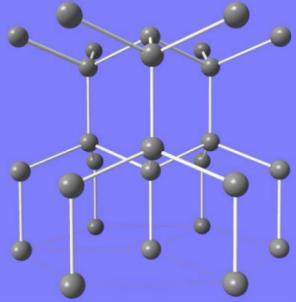

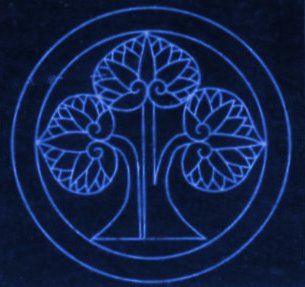
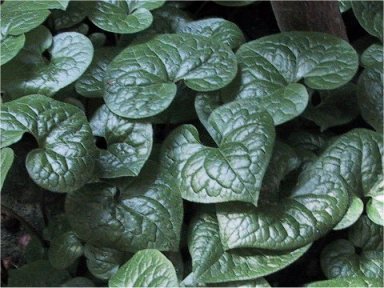
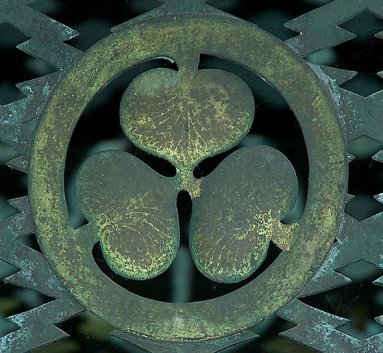
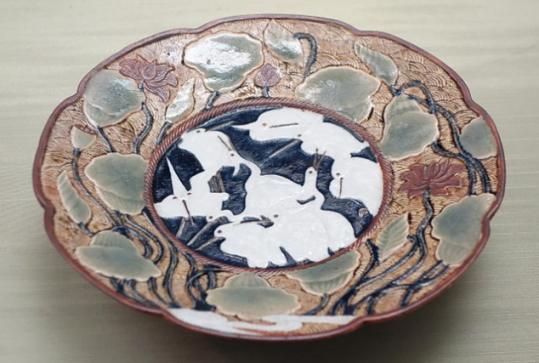
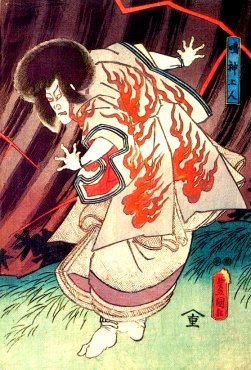
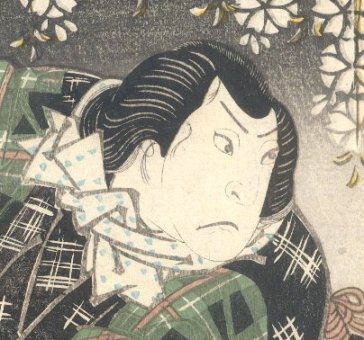
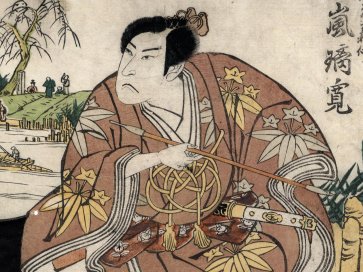

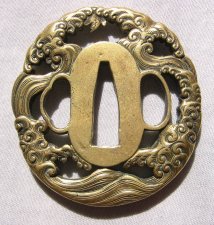
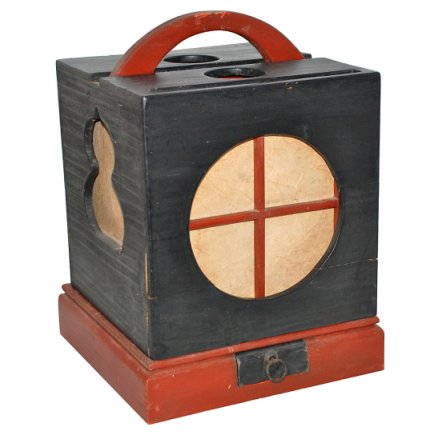

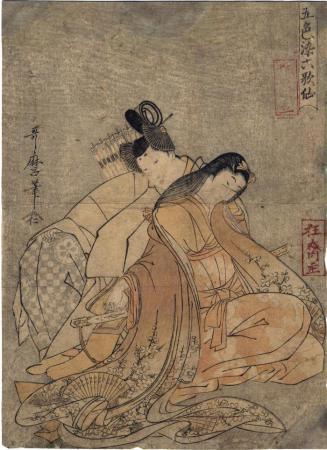

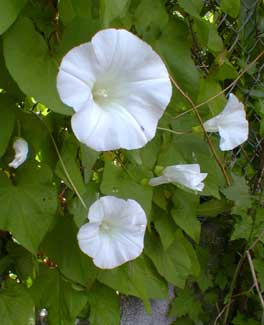
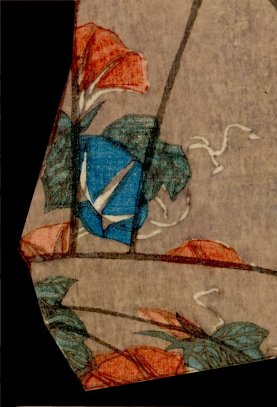


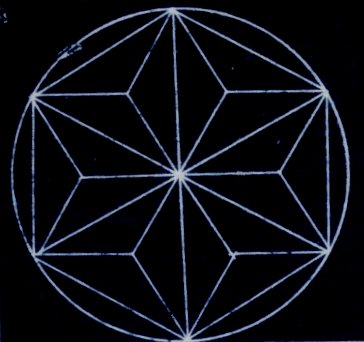
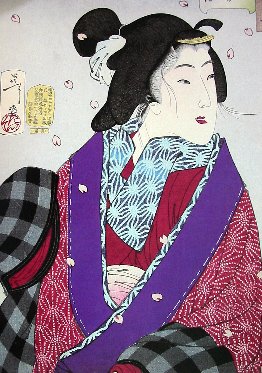
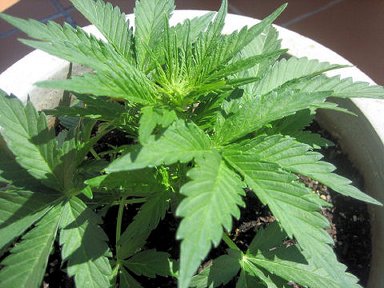
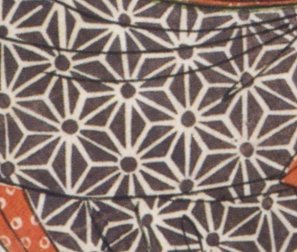
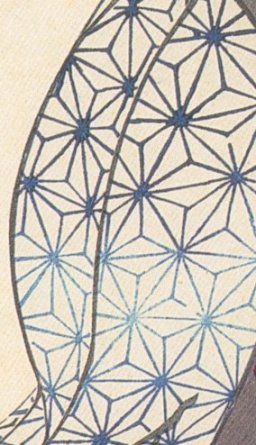
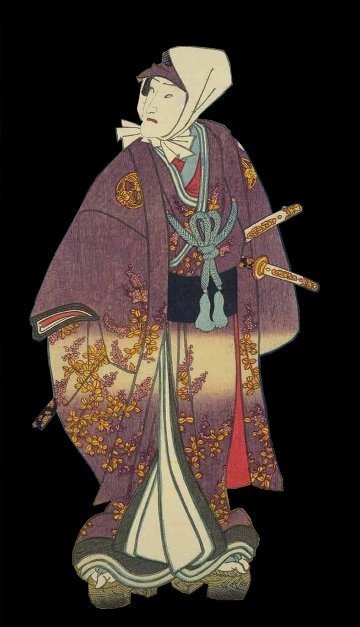


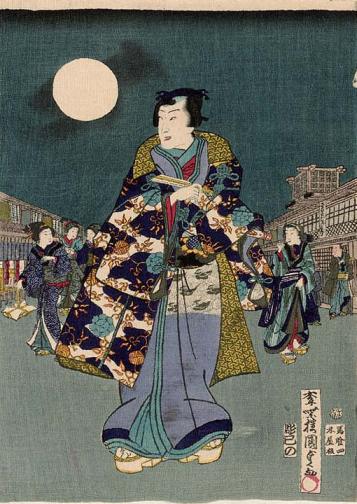
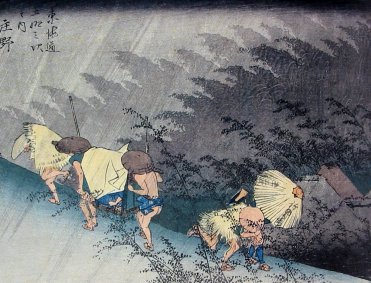
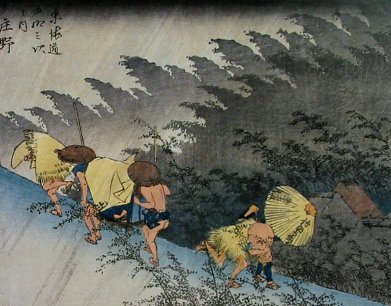
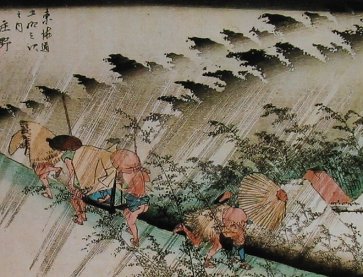
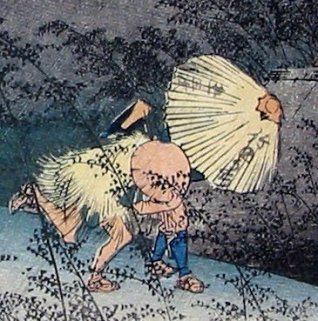
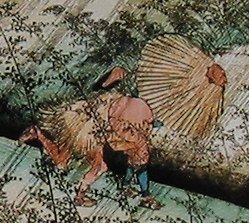

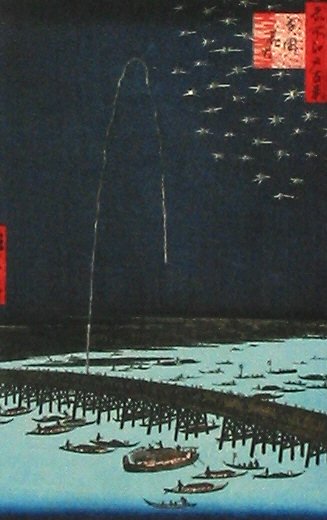
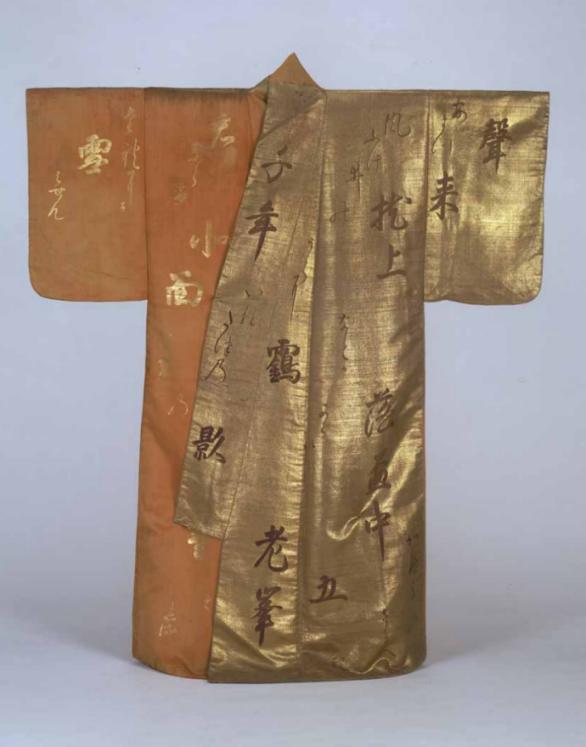
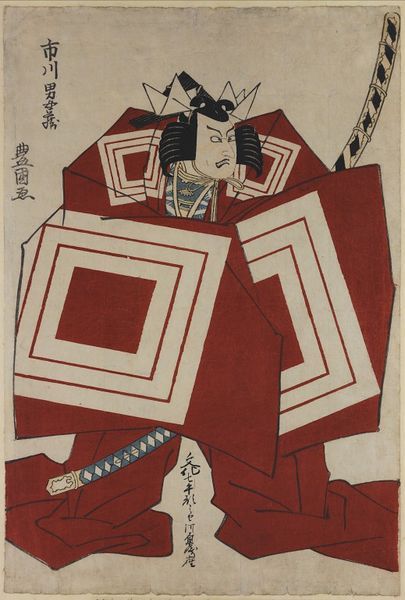
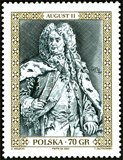
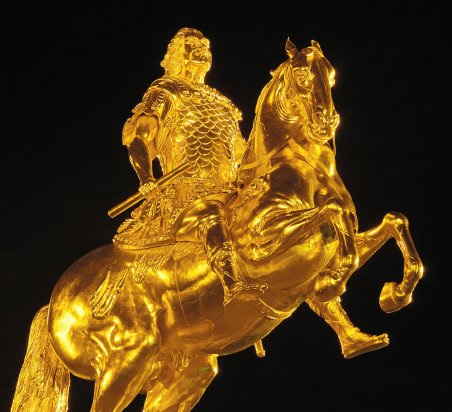

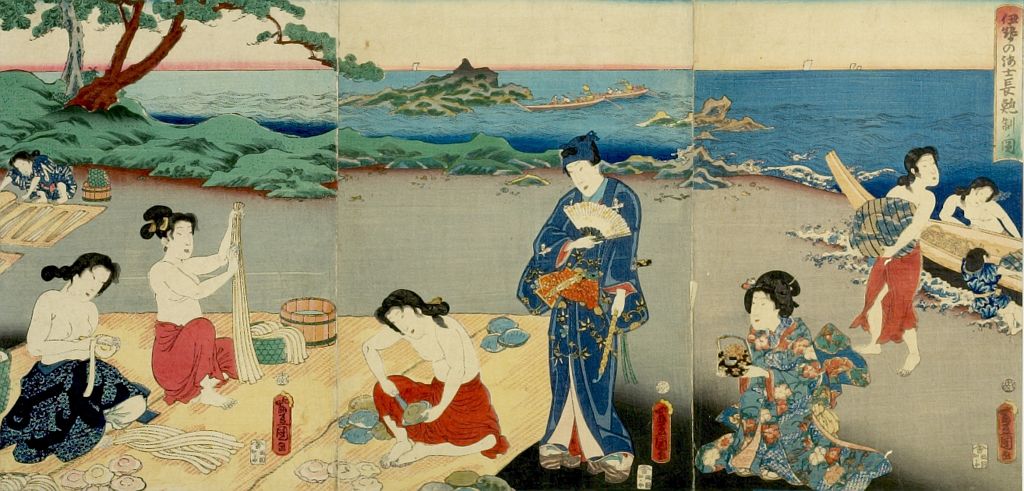
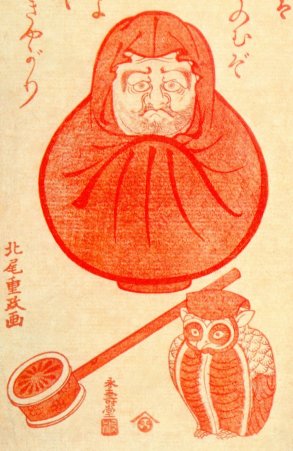
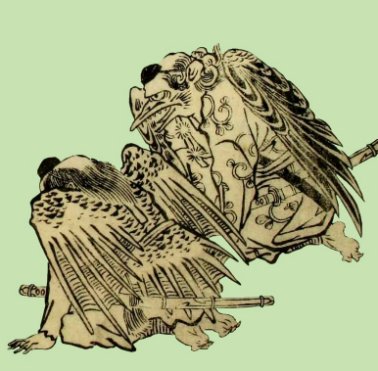
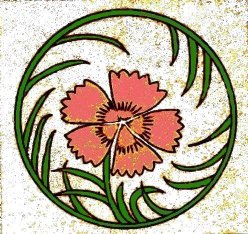
 HOME
HOME